Disclaimer: We are NOT professionals. We do not claim to have the best technique for docking or for doing anything else aboard a boat but we did learn this technique from a professional captain with decades of experience sailing and cruising. We’ve been living aboard for 4 years and have spent the last year and a half cruising with our family and without a home slip in the Pacific Northwest. After a lively discussion on the merits of finding a safe docking routine that does NOT require anybody aboard to leap from the boat to the dock, I decided to throw together a quick blog post outlining our favorite method for docking our 40-foot sailboat.
When we lived aboard in our marina in Portland, we got comfortable with how we docked the boat. We knew the slip and were familiar with any hazards along the finger docks- despite advice to the contrary, we grew complacent and never had any issues with docking the boat with Brenden at the helm and myself running the lines and hopping down off the boat in the slip to “catch”.
However, when we left Portland to head up to the Puget Sound in May of 2019, we transitioned to being not just liveaboards, but cruisers with no home slip. Things got really interesting for us and we had to adjust to a new routine and often found ourselves coming into a marina to dock the boat where we’d never been before. This is when our docking skills were put to the test and forced to improve.
We had the unfortunate experience and added motivation that came with a particular docking snafu. In a new-to-us marina, Brenden brought the boat into the slip a little bit crooked due to cross currents, wind, and the slip-neighbor’s dinghy overhanging into our space. We were both a bit flustered but Brenden got us close enough that I could jump to the dock and finish guiding Mosaic in. I made the jump fine but my landing zone at the end of the finger dock was compromised: most of the dock was cement but the very end of the finger around the piling was wood. On my particular finger dock, the wood was rotten and as I landed on it my whole foot and lower leg went through the dock. Thankfully, I came away with only a few lacerations to my knee and ankle. I was able to get up and finish getting Mosaic tied, and then tend to my wounds. But that incident struck us both with the realization that we needed to be more safety-conscious as one can never control every aspect of the docking environment.
Set Yourself Up For Docking Success & Avoid Any Need For Rushing
We use resources and tools such as cruising guides and marina websites and maps, along with satellite images from Google Maps, to scout ahead any time we’re heading to a new marina. Getting a feel for the lay of the land eases our nerves as we can know better what to expect and even plan bail-out spots or backup plans in case anything goes wrong.
Often times though, even despite calling ahead for a reservation, we might not know whether we’ll be docking bow-in port side or bow-in starboard side. So we further stack the deck in our favor by having enough fenders and dock-lines aboard the boat to be able to set up to land on either side. Doing so allows the docking process to proceed without a need to either A) set up on one side not knowing if you’ll need to rush to switch everything to the other side, or B) waiting and not setting up at all until you figure out which side you’ll be landing on and then rushing to get set up.
Both of those scenarios leave at least the potential to need to rush to get your dock lines and fenders set up properly. Docking is stressful enough! Don’t do anything that will leave you needing to rush or get flustered.
So, well before we come into a marina, we will have at least 3 fenders tied to each side of Mosaic and a bow line, a stern line, and a mid-ship spring line set up and ready for action. I’m always careful to leave the lines coiled neatly and set on deck or held in-hand to avoid a mishap with a tangled line. Brenden’s mantra is, “If you’re not bored, you’re going too fast.” I’ve also heard the advice, “When moving through a marina or heading in to your slip, only go as fast as you’re willing to hit something.” These thoughts keep us going pretty slow. On the flip side though, of course, you have to keep enough way on to have steerage. It’s a balancing act.
Dock Using Your Engine For Control And A Single Mid-Ships Spring Line To Catch The Boat
As we come into the slip, I will have the spliced loop of the mid-ship line around the mid-ship cleat and will be holding the line prepared to toss it around a cleat on the finger dock near the end. When you toss, keep ahold of the end of the line so that you can capture the cleat on the dock. Simultaneously, the helmsman should be bringing the boat to a stop right alongside the dock. It will often hover there for 5-10 seconds, giving the linesman time to catch the cleat and tie it off back at the mid-ship cleat.
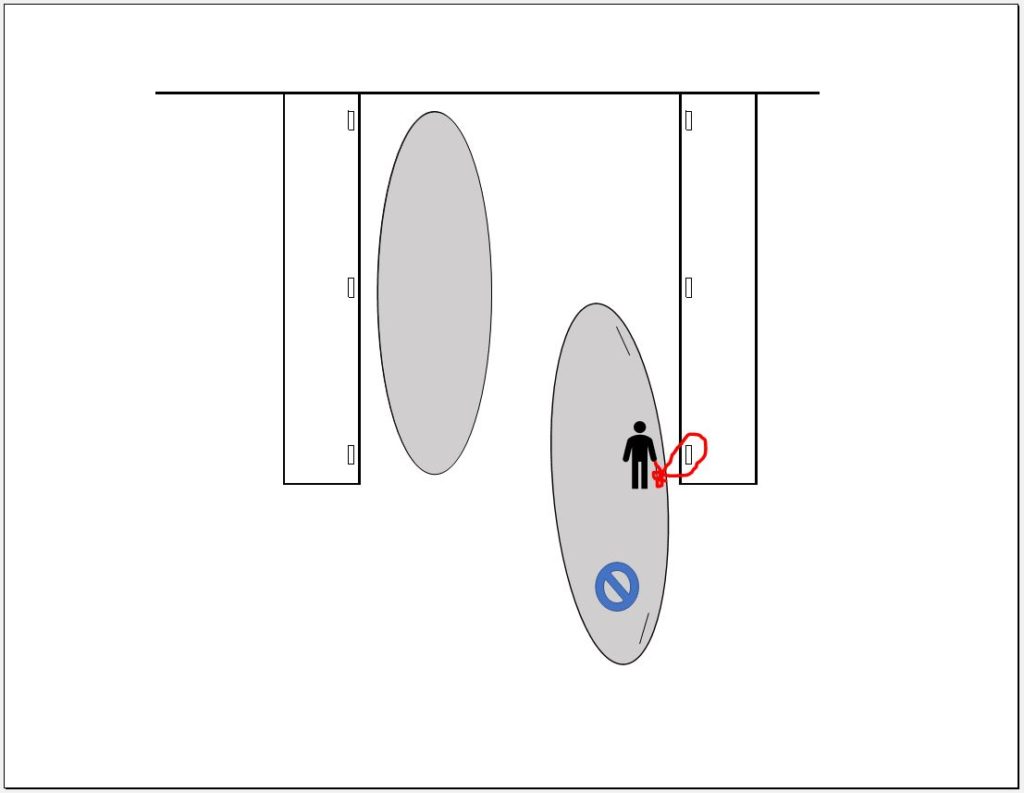
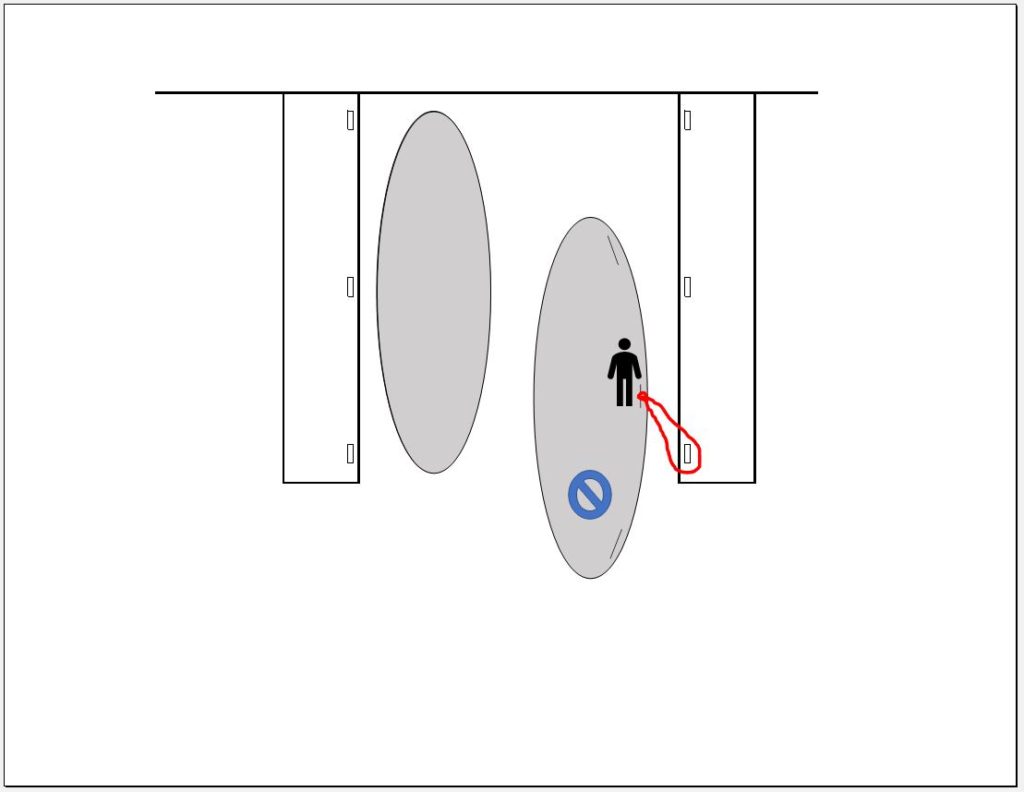
Once you’ve captured the cleat and have the line tied back on the mid-ship cleat, the helmsman should put the boat back into forward idle and move gently ahead. The line will catch and come tight as the line holds the boat from going forward. The helmsman needs to steer the boat primarily away from the dock at this stage and can then work the rudder to position the boat to be straight in the slip, keeping the bow and stern away from the boat in the slip next to you.
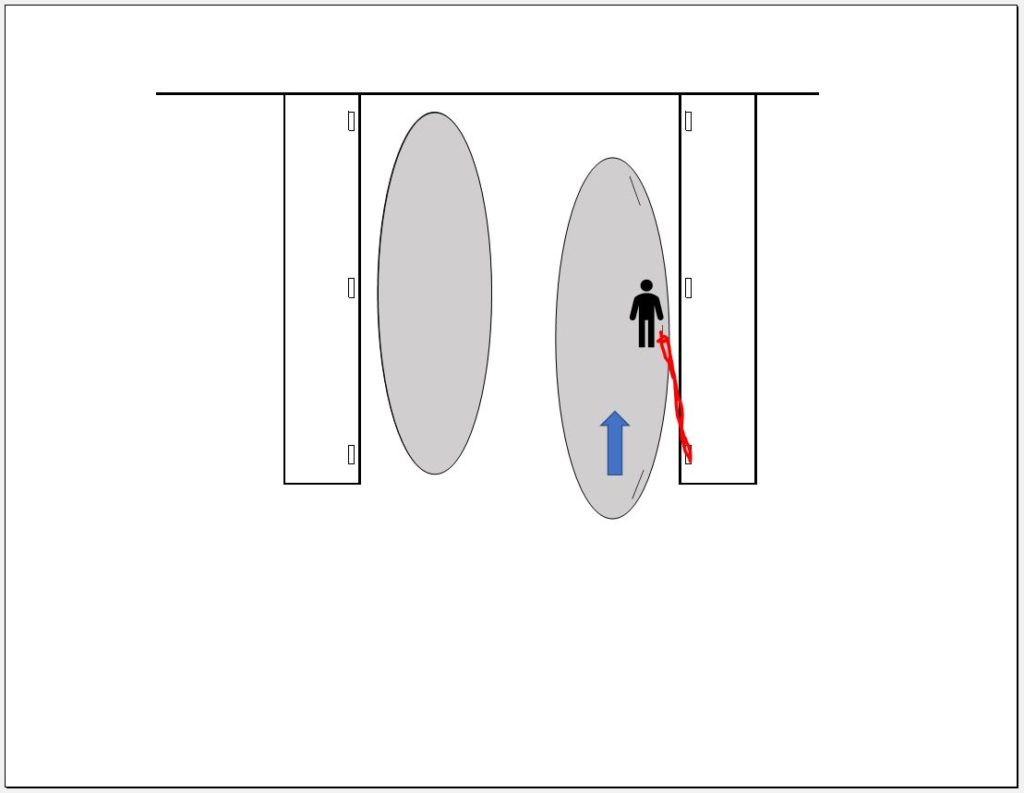
The boat will settle at this point. We usually leave the helmsman at the helm but theoretically once settled you could lock the wheel and move away from the helm if needed. At this point, the linesman can move forward and toss the bow line to catch a cleat and tie the bow line back on the boat loosely to control the bow.
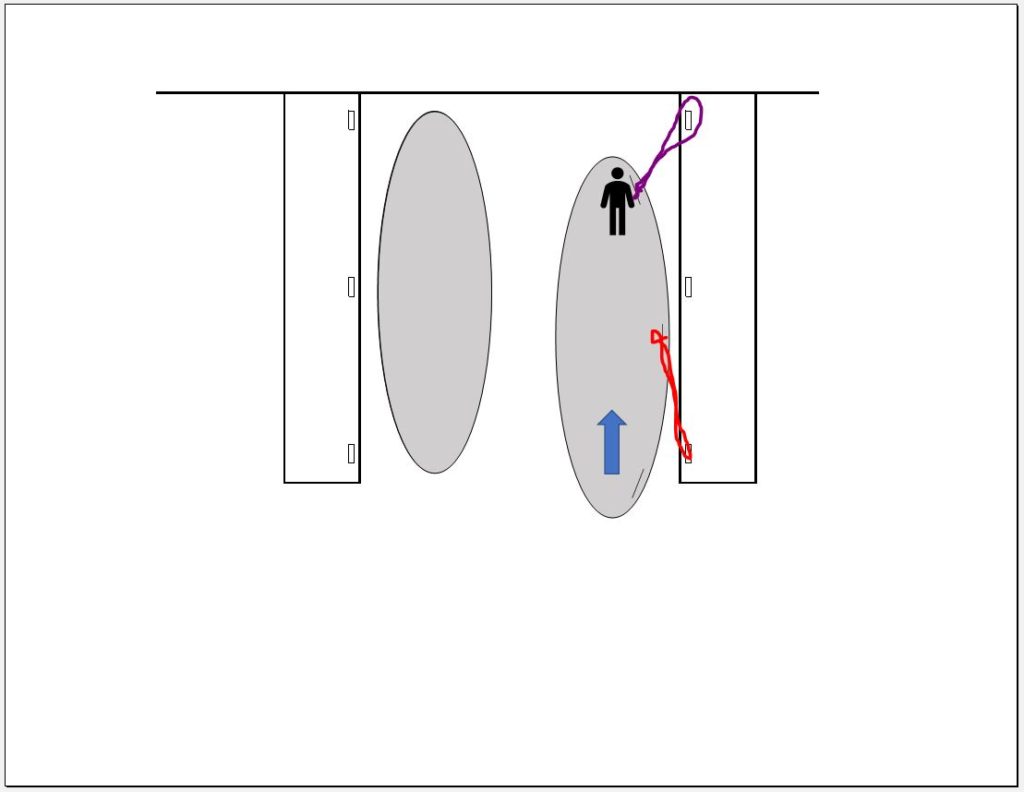
Now, with the bow secured, the linesman can move back and take up the stern line. At this point, we usually call her landed and I step down off the boat with the stern line in hand and my husband will put the engine in neutral. Once in neutral, the boat will start to drift backward in the slip and the stern might start to drift sideways toward the boat beside you. The linesman will need to use the stern line to control the stern.
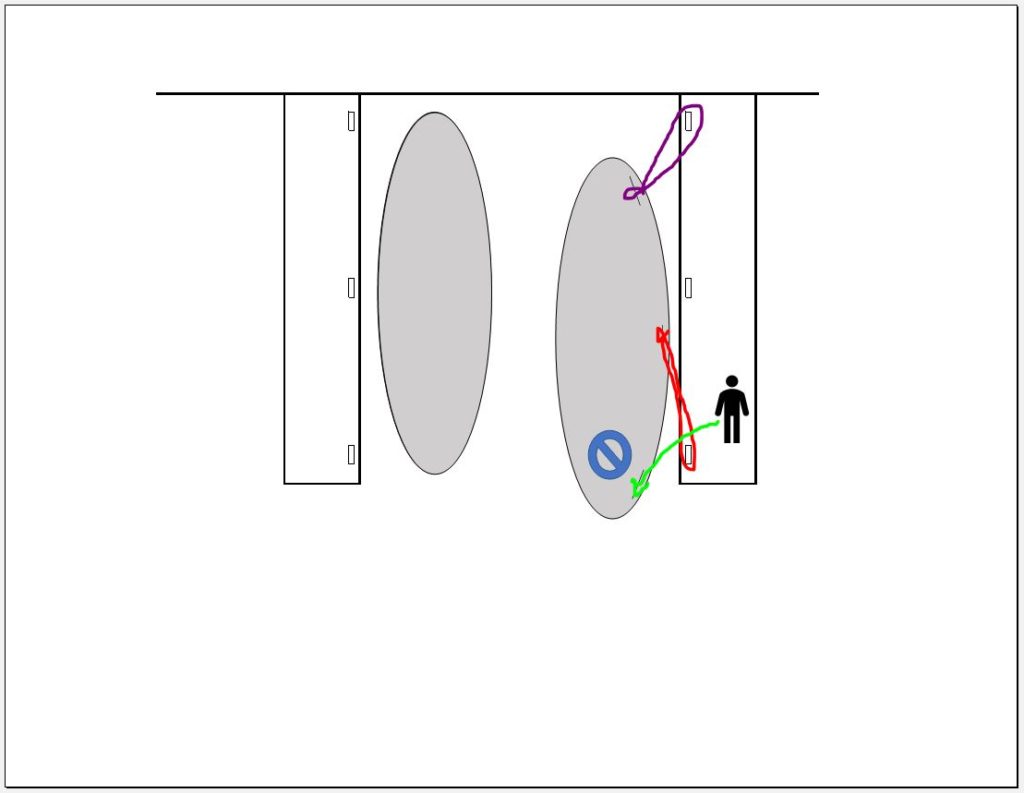
Now, you’re fully landed. The helmsman can turn off the engine. The mid-ship spring line will likely be removed from the end cleat on the dock and the stern line tied there. You may need to readjust the bow line as well. And you should settle the boat with new forward and aft spring lines.
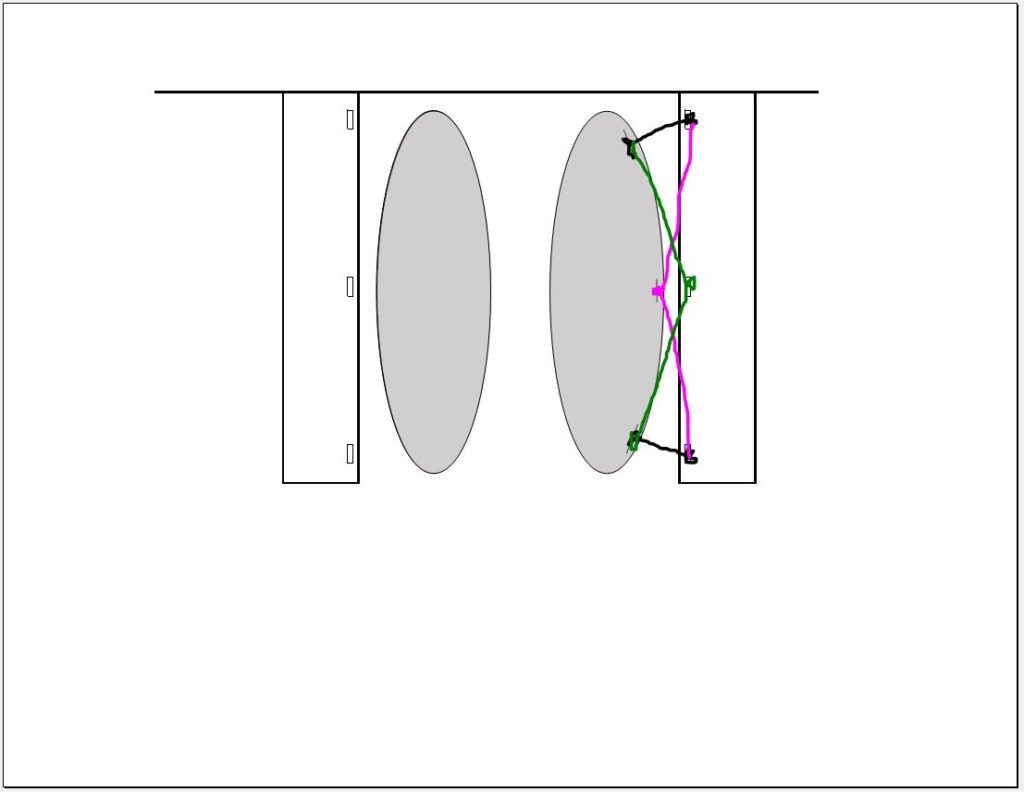
Sometimes we get lucky and have 4 or even 5 dock cleats to work with. If that’s the case, we can use the mid-ship line to catch the boat on the 2nd cleat in and then would be able to toss and catch the stern line on the 1st cleat and control the entire docking process from aboard the boat.
The whole maneuver can easily be practiced alongside a nice long linear moorage dock, too, and I recommend you practice that way first to get a feel for it and how your boat handles.
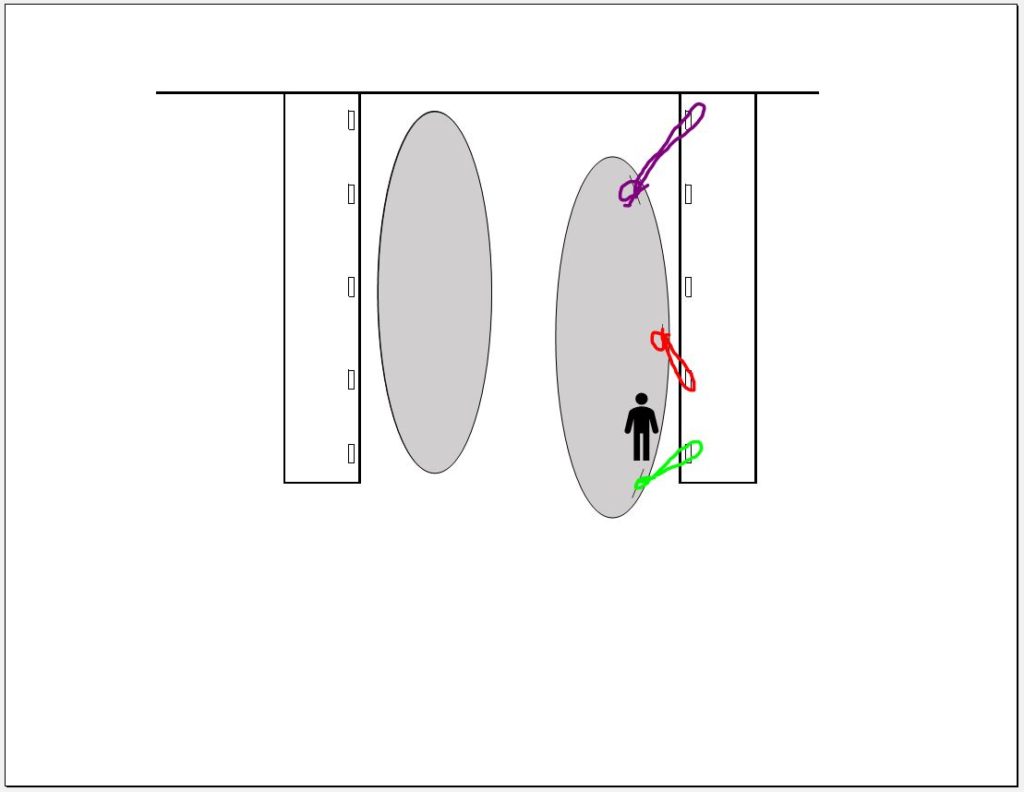
All of this is dependent on a marina slip with cleats. As cruisers in the puget sound, we have a Washington State Park Moorage Pass and we often tie up at State Park docks or other places that only have bull rails and no cleats to work with such as here at Blake Island Marine State Park outside of Seattle.
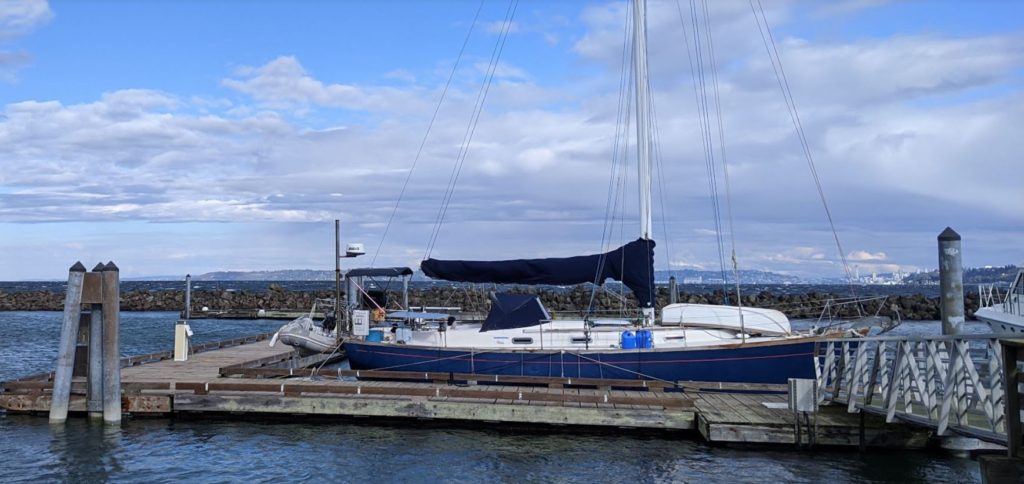
In these places, sometimes there are breaks in the bull rail that allow the linesman to catch an end as if it were a cleat.

If there’s just a solid bull rail, we can’t use our preferred method of docking. In this situation, we will just carefully bring the boat alongside the dock and bring it to a halt as much as possible before carefully, slowly, and safely transferring from the boat to the dock with both a bow and stern line in hand.
If the boat is moving too much or too far from the dock for an easy transfer across for the linesman, that will be communicated and the helmsman will reverse out and try the approach again.
Do you know a better way to dock your boat? I would love to hear about it!
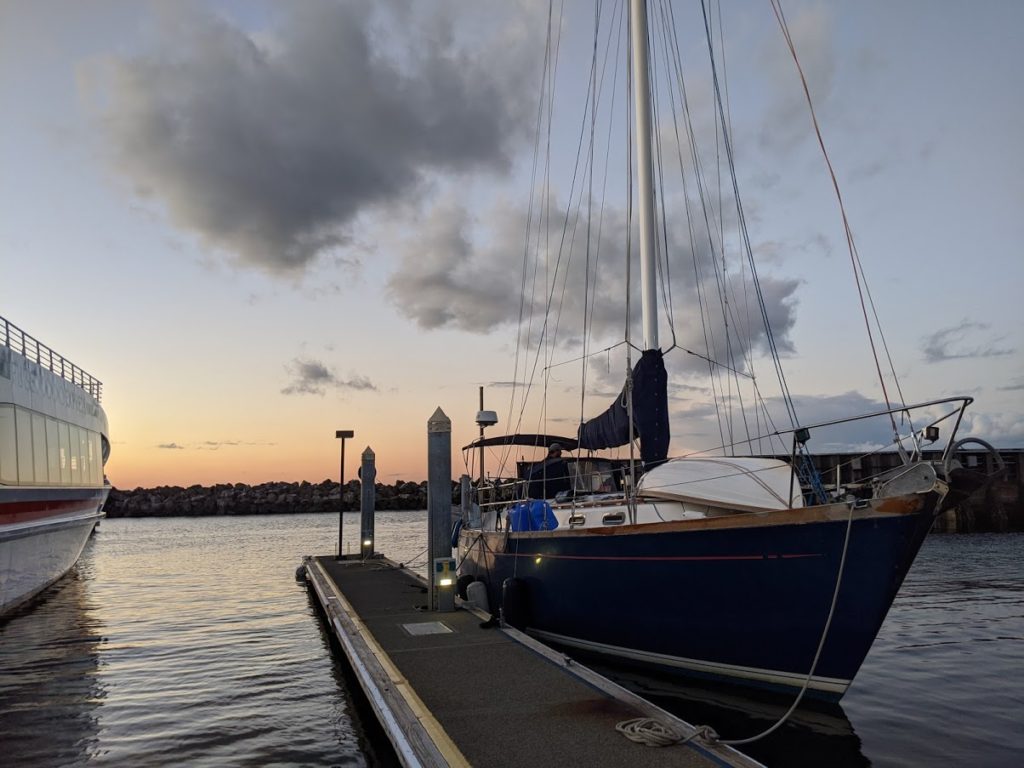

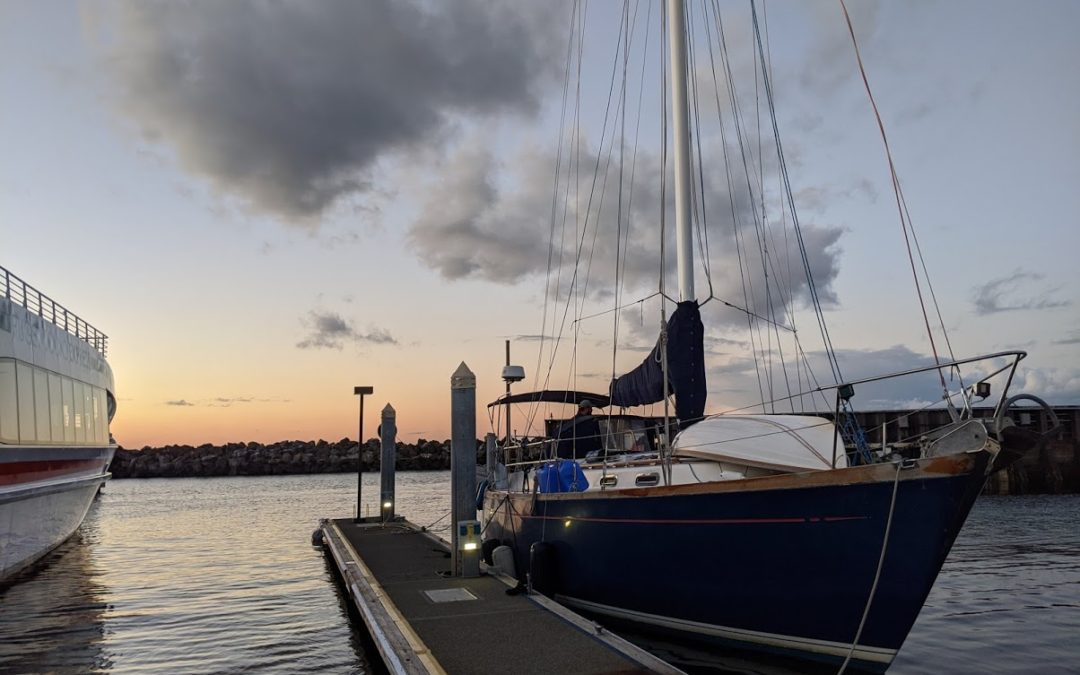
Hi Patrick!
No mid-ship cleat would make this difficult, right!? Haha. We’re lucky – our boat is liberal with good strong cleats: each side has SEVEN cleats. We have two at mid-ships so that makes this technique even easier as there’s one for the spliced loop and still a free one for an easy (and quick) cleat hitch to secure it. 🙂
Thanks for reading, and your comments. Hope you guys are well up in the SJIs. 🙂
~Rachel
Good tips, especially “If you’re not bored, you’re going too fast.”
Every boat is different and it seems to be a matter of finding what works best for you/boat. Our boat has no mid-ship cleat so we’ve never quite gotten your technique to work. The mid-ship spring line needs to be truly mid ship and be able to tie it off quickly.